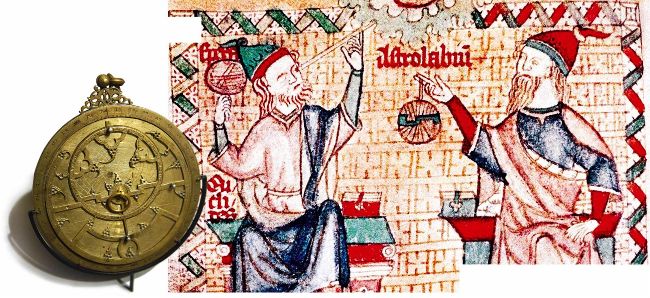A steep learning curve

Age of information A 14th-century illustration shows German scholar Hermann the Lame (right) with an astrolabe (also shown far left). This device for making astronomical measurements was invented by the ancient Greeks and recovered via medieval information exchange
GETTY IMAGES/AKG-IMAGES/BRIDGEMAN
In the 11th century, a physically disabled and extremely learned German monk called Hermann the Lame worked out how to build an astrolabe –a sophisticated piece of technology, since dubbed the “medieval iPhone”, that was invaluable for timekeeping and navigation.